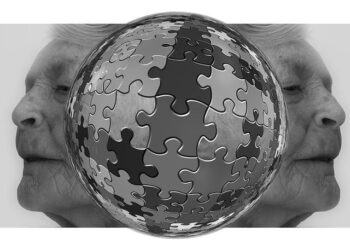NIL is Changing College Sports: For Better or Worse? – KOKH
In recent years, the landscape of college athletics has undergone a seismic shift with the advent of Name, Image, and Likeness (NIL) rights. Once confined to amateur status, student-athletes now have the freedom to monetize their personal brands, leading to a new era that has sparked both excitement and controversy. This landmark change, which allows players to enter partnerships, endorsements, and sponsorships, raises critical questions about the integrity of college sports, the balance of power among institutions, and the long-term implications for young athletes navigating their careers. As universities embrace this transformation, stakeholders across the spectrum—from players and coaches to fans and administrators—are grappling with the question: Is NIL a boon for college sports, or does it herald a path fraught with challenges and ethical dilemmas? In this article, we delve into the evolving dynamics of NIL, exploring its impact on the collegiate sports landscape and examining diverse perspectives on its future.
NIL Impact on Athlete Autonomy and Brand Building
The introduction of Name, Image, and Likeness (NIL) rights has significantly shifted the landscape of college athletics, ushering in an era of unprecedented athlete autonomy. College athletes now have the power to monetize their personal brand, leading to a sense of empowerment previously unavailable in the collegiate system. This transformation allows athletes to:
- Negotiate sponsorship deals directly with brands, fostering entrepreneurship.
- Engage with fans through social media platforms, solidifying their personal brand.
- Capitalize on their performance and popularity, potentially generating income that was once prohibited.
However, this newfound freedom brings challenges, particularly for those athletes still navigating the complexities of brand building. The pressure to maintain a marketable image can be overwhelming, and in an era where social media scrutiny is prevalent, some young athletes may struggle with the expectations that come with NIL opportunities. This situation raises questions about the balance between athletic focus and the demands of brand management:
| Pros of NIL | Cons of NIL |
|---|---|
| Increased earnings potential | Heightened pressure to perform |
| Greater control over personal brand | Risk of brand-related controversies |
| Encourages entrepreneurial spirit | Distraction from academics and sports |
Financial Implications of NIL on College Sports Programs
The landscape of college sports is undergoing a seismic shift with the implementation of Name, Image, and Likeness (NIL) agreements. For many athletic programs, the financial implications are profound, creating both opportunities and challenges. On one hand, schools are finding new revenue streams through enhanced visibility and partnerships stemming from athlete endorsements. This shift allows programs to potentially bolster funding for facilities, scholarships, and overall athletic department budgets. Key benefits include:
- Increased Sponsorship Opportunities: Brands are eager to associate with collegiate athletes, leading to lucrative sponsorship deals.
- Higher Recruitment Value: Programs boasting NIL-friendly environments may attract top talent, enhancing their competitive edge.
- Fundraising Potential: Increased athlete marketability can stimulate alumni donations and fan engagement.
However, the new financial dynamics also raise concerns over equity and sustainability. As top-tier athletes secure substantial endorsement deals, a disparity may emerge between revenue-generating sports and those that do not attract similar attention. Additionally, smaller programs may struggle to compete for talent as resources become concentrated among the elite institutions. Some of the concerns include:
- Market Imbalance: Programs with wealthier athletic departments could amass talent at the expense of smaller schools.
- Focus on Individualism: The prioritization of personal brand over team goals may alter the culture of college athletics.
- Compliance Challenges: Navigating NIL regulations poses significant hurdles for schools, requiring transparent policies and support systems.
Navigating Ethical Challenges in the New Era of College Athletics
The implementation of Name, Image, and Likeness (NIL) rights has ushered in a transformative phase for collegiate athletics, intertwining the realms of sports and commercial enterprise in unprecedented ways. As student-athletes gain the ability to monetize their personal brands, the landscape is becoming a battleground for ethical dilemmas. Key concerns include:
- Equity Among Athletes: Will prominent athletes overshadow their peers, leading to disparities in financial opportunities?
- Influence and Pressure: How will the potential for lucrative endorsements affect young athletes’ decisions both on and off the field?
- Recruitment Ethics: Are institutions using NIL deals as a recruitment tool, thus blurring the lines between athletic talent and financial gain?
Furthermore, institutions face challenges in establishing guidelines that uphold the integrity of college sports while encouraging fair competition. As the NCAA and universities scramble to adapt, a clear regulatory framework is essential to navigate this new era. Considerations include:
| Factor | Implication |
|---|---|
| Regulatory Oversight | Need for consistent policies to manage NIL agreements. |
| Transparency | Ensuring fair play and equal access to opportunities for all athletes. |
| Long-Term Impact | Potential shifts in athlete career trajectories and education priorities. |
In Summary
the advent of Name, Image, and Likeness (NIL) rights has undoubtedly ushered in a new era for college sports, creating both challenges and opportunities for athletes, institutions, and fans alike. As we navigate this transformative landscape, questions about equity, recruitment practices, and the integrity of college athletics remain at the forefront of discussions. While some view NIL as a step toward fair compensation for athletes who generate substantial revenue, others express concern over the potential for significant disparities and an arms race among programs. As stakeholders continue to adapt to these changes, the long-term implications for college sports will become increasingly clear. For now, the debate rages on: is NIL ultimately a change for the better or worse? Only time will tell. For continuous updates and in-depth analysis on this evolving story, stay tuned to KOKH News.






























